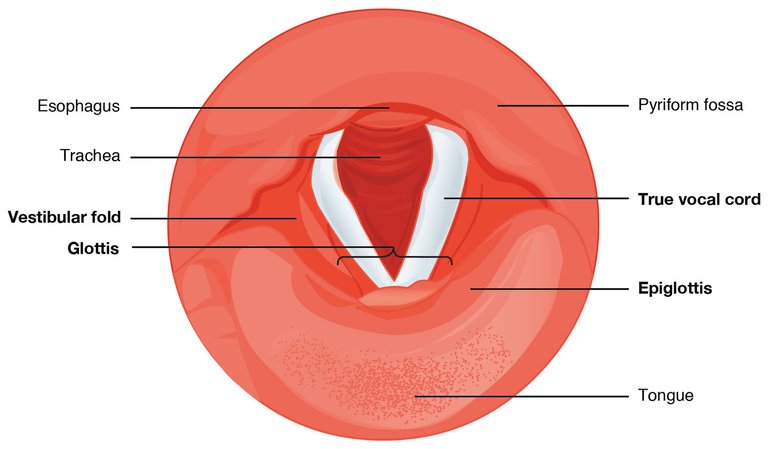The Science Behind the Production of Consonant and Vowel Sounds
Consonants and vowels are alphabets we are familiar with at least from our elementary school but you see, you will be surprise at how much science we can discuss on this topic. First, this is because both consonants and vowels are just sounds being made and human languages are just made up of consonants and vowels.
Making consonants can happen by bringing together two parts of the mouth or throat for instance making the sound "P" has to do with joining two lips together and blocking air for a jiffy, with the letter "S", the teeth is joined together while air is being forced out of it. With "T", the Tongue taps on the top of the roof, and the teeth are together. I am referring to the sound and not the letter themselves so I hope you get it. Combining this sound together /pst/ is the only consonant word in the Oxford dictionary for now (PSST).
While some consonant pronunciation do not require the vocal chord, vowel sounds do require it as it vibrates for all the vowels. Vowel comes from the latin word Vocalis meaning Vocal. In school, we are thought that there are 5 vowels based on alphabet, but based on sound, we have about 12 vowel sounds in English. Depending on the Language, the vowel sounds can increase or decrease in number.
All vowels lie on a spectrum where we can slide through them depending the position of the mouth. It is this spectrum that causes people to ask if Y and W are vowels most especially Y since W has the D consonant in its pronunciation but Y is a combination of vowels "UAI".
The human vocal chord (vocal folds)vibrates when we make sounds and depending on the pitch, it can either lengthen or shorten. The Vocal chord vibrates, but it doesn't produce a single tone or frequency rather produces lots of different frequencies at once. When we say a word, there is a particular frequency that we hear and this is what our vocal chord produces but below this vibration back and forth, it is also producing a bunch little vibrations to accompany the bigger vibration.
The mix of frequencies is a combination of the main frequency and harmonics but then when our vocal chord produces these vibration, it is not what we hear. The vocal tract filters sound thanks to resonance, remember that the vocal tube is a one end tube and we can hear different sounds when we blow through an empty one sided tube and a half filled one such as a bottle blown at the top half filled and empty produces different sounds as a result of frequency and resonance. When the vocal tract filters the vibration, some frequency are heard more (formants) than others.
People with bigger voice tubes tend to have bigger bodies or head so they resonate lower sounds compared to people with smaller tubes, who have smaller bodies and head. Voice production is also affected when the nose is blocked because part of the resonance tube is blocked. Parts of our mouth are important in shaping which sound frequency will be heard as they all serve as resonance. The resonance can include moving the tongue, shapes of lips, blocking and opening flow of air through the nose, Opening and Closing the Jaws, and so on.
Vowels are made from resonance allowing different frequencies to be heard depending on the vocal tract. It isn't like other primate do not have the machinery to also produce sounds similar to humans, the difference is our brain. Some animals like the Chimpanzee, Parrots, Baboons and Gorillas to mention a few are able to make vowel sounds but our brains are set up interpret vowels better than other animals. The sounds of consonants and vowels are not just simple elements of language; they are a complex interplay of physical and neurological processes. Understanding these mechanisms gives us a deeper appreciation for the intricacies of human speech.
Read More
https://www.ncbi.nlm.nih.gov/pmc/articles/PMC6124115/
https://vocology.utah.edu/_resources/documents/how_are_harmonics_produced_titze.pdf
https://www.ncbi.nlm.nih.gov/pmc/articles/PMC4818279/
https://www.degruyter.com/document/doi/10.1515/9783110820041-021/pdf
https://pubs.aip.org/asa/jasa/article/150/5/3485/900227/The-mechanisms-of-harmonic-sound-generation-during
https://scholar.harvard.edu/files/adam/files/phonetics.ppt.pdf
https://iopscience.iop.org/article/10.1088/1361-6404/ab6a63
https://pubs.aip.org/aapt/pte/article/61/1/80/2868862/What-gives-musical-instruments-their-sound


I always say that nothing beats science. If you haven't understood it yet then it is because you haven't gotten a proper explanation. Who would believe that the making of sounds can be as a result vibration, frequencies, formants, and resonance. From the pronunciation of Y, it sounds more vowel than consonant truly.
Thanks for your contribution to the STEMsocial community. Feel free to join us on discord to get to know the rest of us!
Please consider delegating to the @stemsocial account (85% of the curation rewards are returned).
Thanks for including @stemsocial as a beneficiary, which gives you stronger support.
Congratulations @thomisin! You have completed the following achievement on the Hive blockchain And have been rewarded with New badge(s)
Your next target is to reach 35000 upvotes.
You can view your badges on your board and compare yourself to others in the Ranking
If you no longer want to receive notifications, reply to this comment with the word
STOP